Which loaf reigns supreme? Dive into our ultimate bread guide, where we rank 30 types of bread from “meh” to “amazing!”
White Bread
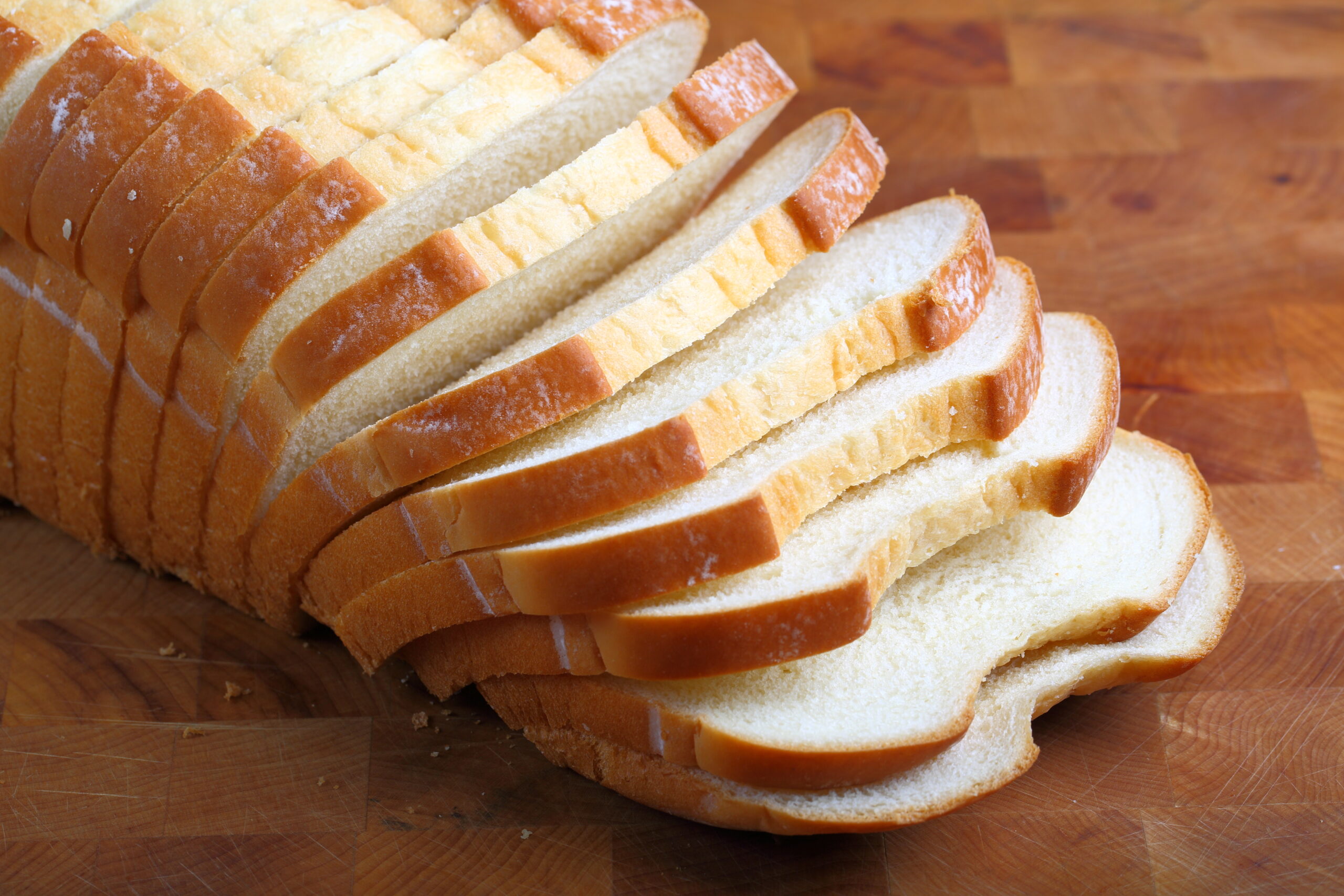
White bread might seem like the underdog of the bakery world, but don’t let its simplicity fool you. This classic has been a staple in many households for generations.
White bread’s soft, fluffy texture and mildly sweet flavor make it a versatile player in the kitchen. It makes for a perfect peanut butter and jelly sandwich or French toast.
Though it might not be the trendiest choice on the shelf, white bread holds its ground with a comforting familiarity. Still, it’s not the best out there.
Whole Wheat

Whole wheat bread is a great way to up your sandwich game and a leap towards better nutrition. Its hearty texture and nutty flavor make it a favorite.
Plus, it packs a punch with fiber and essential nutrients, keeping you fuller for longer. Ever wonder why whole wheat bread feels denser than its white counterpart?
That’s because it retains the entire grain—bran, germ, and endosperm. But at the end of the day, the simple fact is that there are more interesting options.
Fruit Bread

This treat, loaded with dried fruits and nuts, is the perfect companion to your cup of tea. It offers a burst of sweetness and a moment of indulgence.
Not just any ordinary bread, fruit bread weaves together the rich flavors of raisins, apricots, and walnuts. Each bite is a tasty adventure.
Unfortunately, its occasionally heavy and overly sweet nature places it lower on our list. Fruit bread just doesn’t suit every palate or every meal.
English Muffin
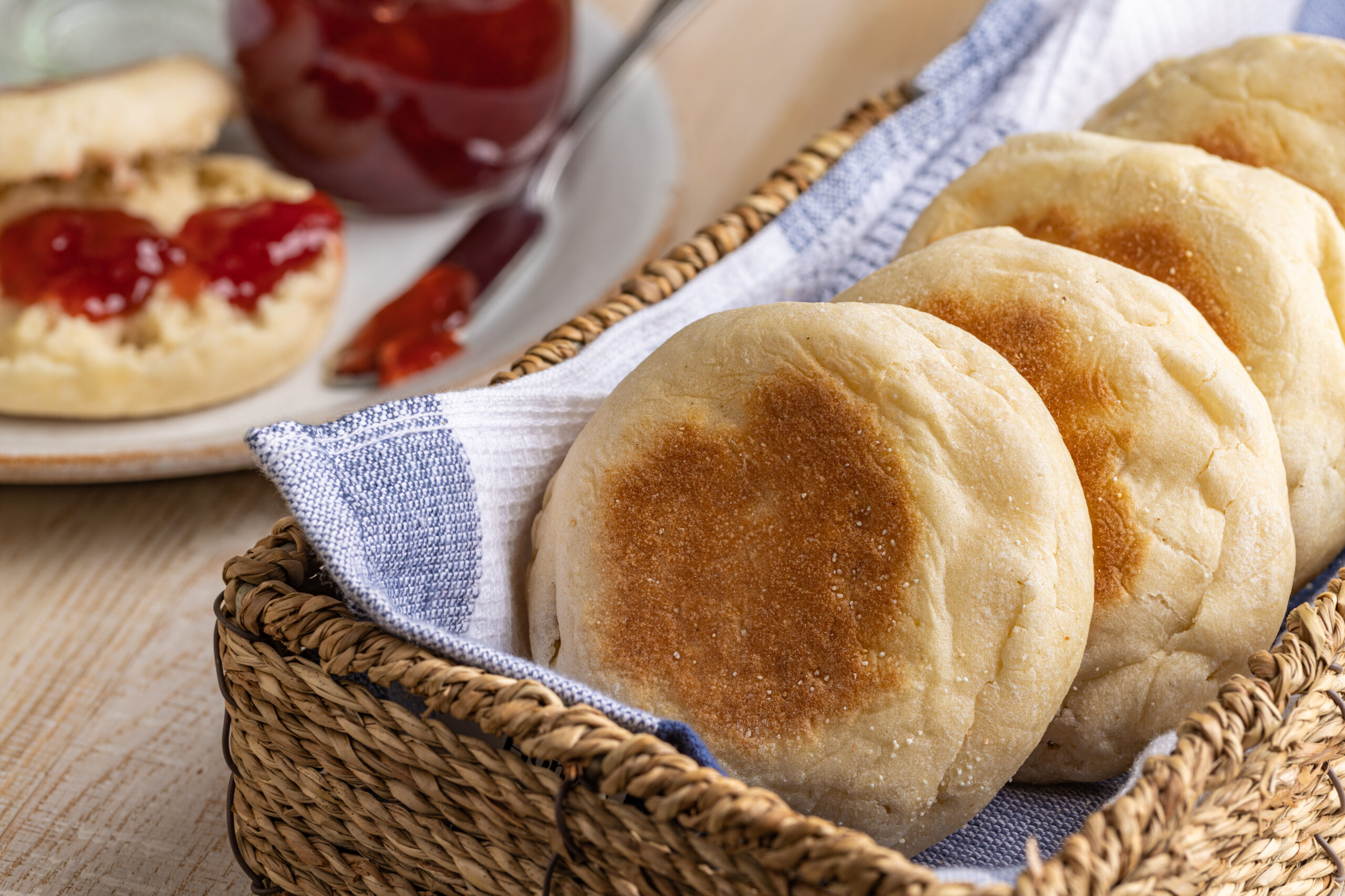
There’s something almost magical about the way English muffins toast, isn’t there? Those nooks and crannies aren’t just for show; they’re perfect traps for butter and jam.
This yeasted bread is unique in that it’s cooked on a griddle, giving it a distinctively crisp edge and a soft, airy interior. It’s ideal for breakfast sandwiches.
However, its plainness and the necessity of toasting to achieve optimal texture keep it from ranking higher, where more flavorful or ready-to-eat breads shine.
Cornbread

Cornbread has a unique charm that can swing from sweet to savory with just a tweak of ingredients. It perfectly pairs with just about everything.
Did you know that cornbread’s roots run deep in American cooking? Its heritage traces back to Native American cuisine. This versatile bake has evolved over the centuries.
Over time, it’s absorbed various flavors and influences, making it a beloved side dish in kitchens across the country. Its simplicity and heartiness make it a comfort food staple.
Panettone
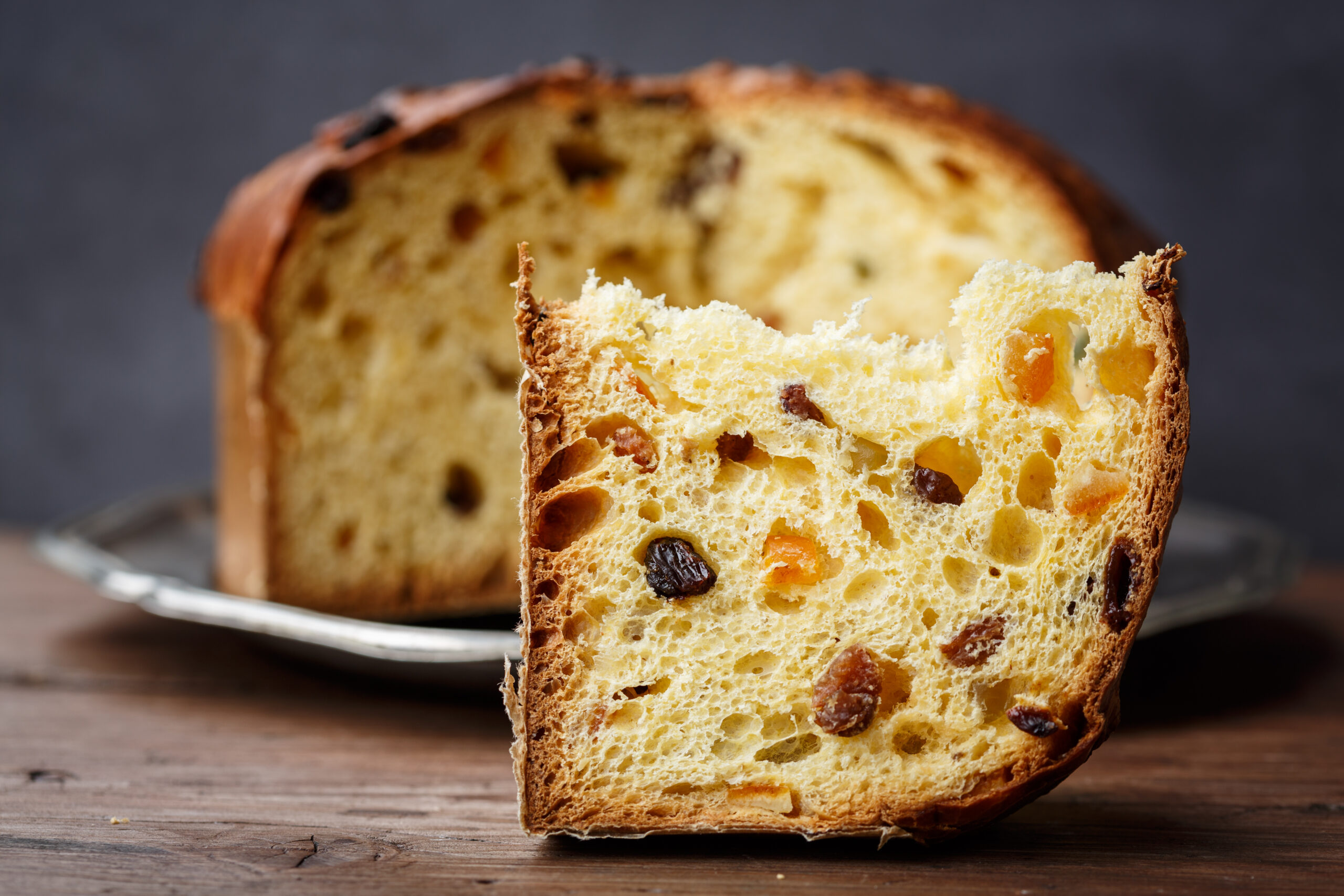
A traditional Italian treat that’s become a global festive favorite, panettone is a testament to the joyous spirit of the holiday season. It’s a truly festive delight.
Crafting the perfect panettone is an art form, involving a slow fermentation process that gives it that signature airy texture. It also creates a signature dome-shaped top.
However, its sweetness and seasonal roots tend to pigeonhole it. This bread is typically a special-occasion treat rather than an everyday favorite, which limits its ranking.
Rye
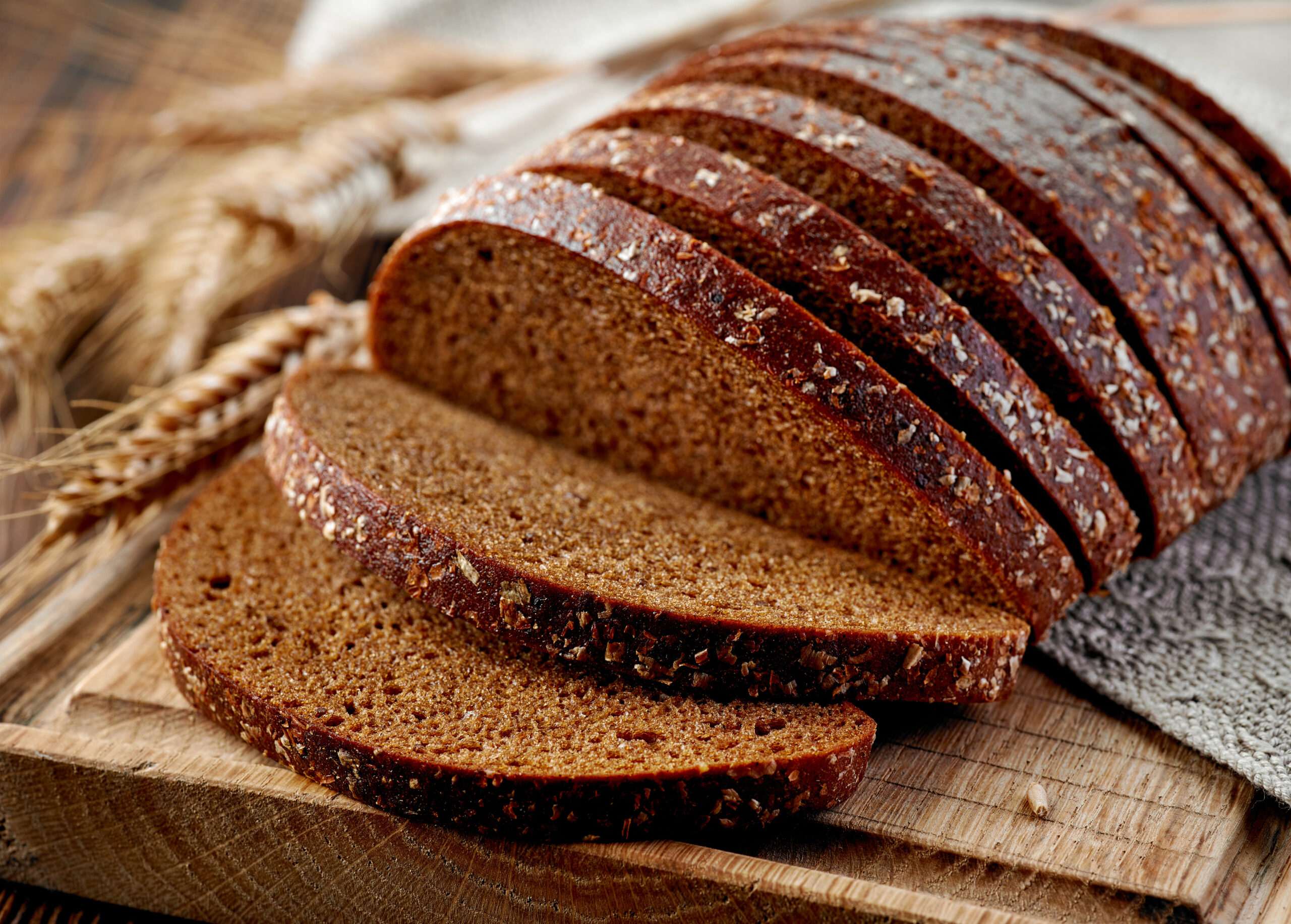
With its distinctively tangy flavor, rye is the hero of pastrami sandwiches everywhere. It’s the kind of bread that doesn’t just accompany a meal but elevates it.
For those adventurous enough to explore its bold taste, rye bread is also packed with nutrients, including fiber, vitamins, and minerals, making it a hearty choice.
Why does rye bread taste so unique? It’s all thanks to the rye grain itself, which imparts a deeper flavor compared to the milder taste of wheat.
Multigrain

Multigrain bread packs a delightful punch with its diverse blend of grains like barley, millet, and flax. This variety of grains adds a hearty texture and taste.
This bread has a nuanced, earthy flavor that’s supremely satisfying. While it’s a powerhouse in terms of fiber and nutrients, it doesn’t quite snag the top spot.
Why? Some people find the dense texture of multigrain bread a bit too hefty for everyday enjoyment. Still, multigrain makes for an amazing and filling sandwich.
Pumpernickel

Pumpernickel bread, with its deep, dark appearance, is packed with a rich rye flavor that’s both bold and nuanced. It’s a perfect canvas for memorable meals.
Unlike its lighter rye cousins, pumpernickel achieves its signature density and color from a long, slow baking process. This method caramelizes the sugars in the rye flour.
For those looking to explore the depths of flavor that bread can offer, pumpernickel is a must-try. Its unique taste profile pairs wonderfully with a variety of toppings.
Irish Soda Bread
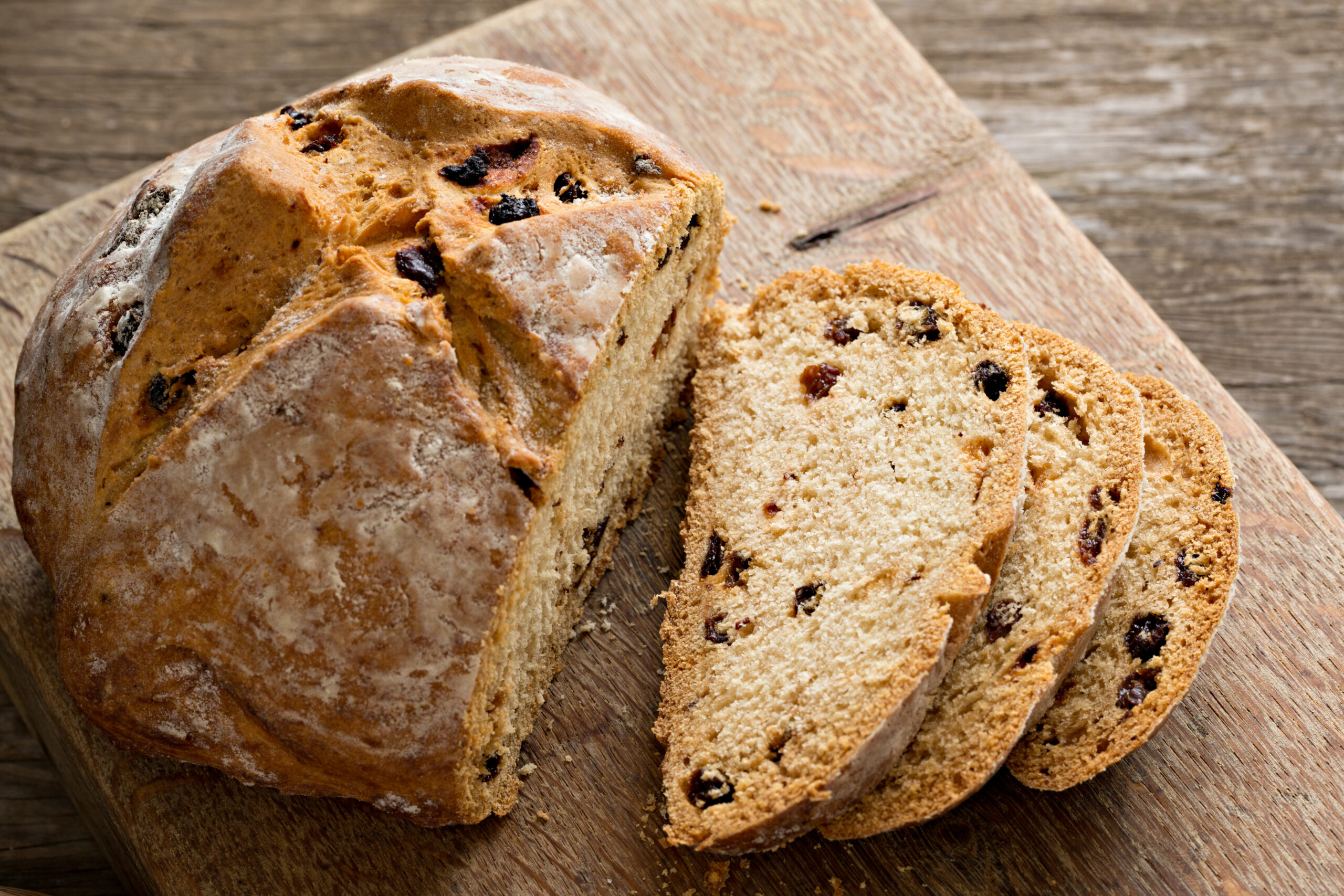
Ever been hit by a sudden urge to bake but then realized you’re all out of yeast? Fear not! Irish soda bread comes to the rescue.
his quick, hearty bread doesn’t require yeast. And that makes it perfect for those spur-of-the-moment baking sessions. So how exactly does it work?
It uses baking soda as a leavening agent, which gives it a distinctive texture that’s dense yet tender. Its crust is typically crisp and golden.
Naan
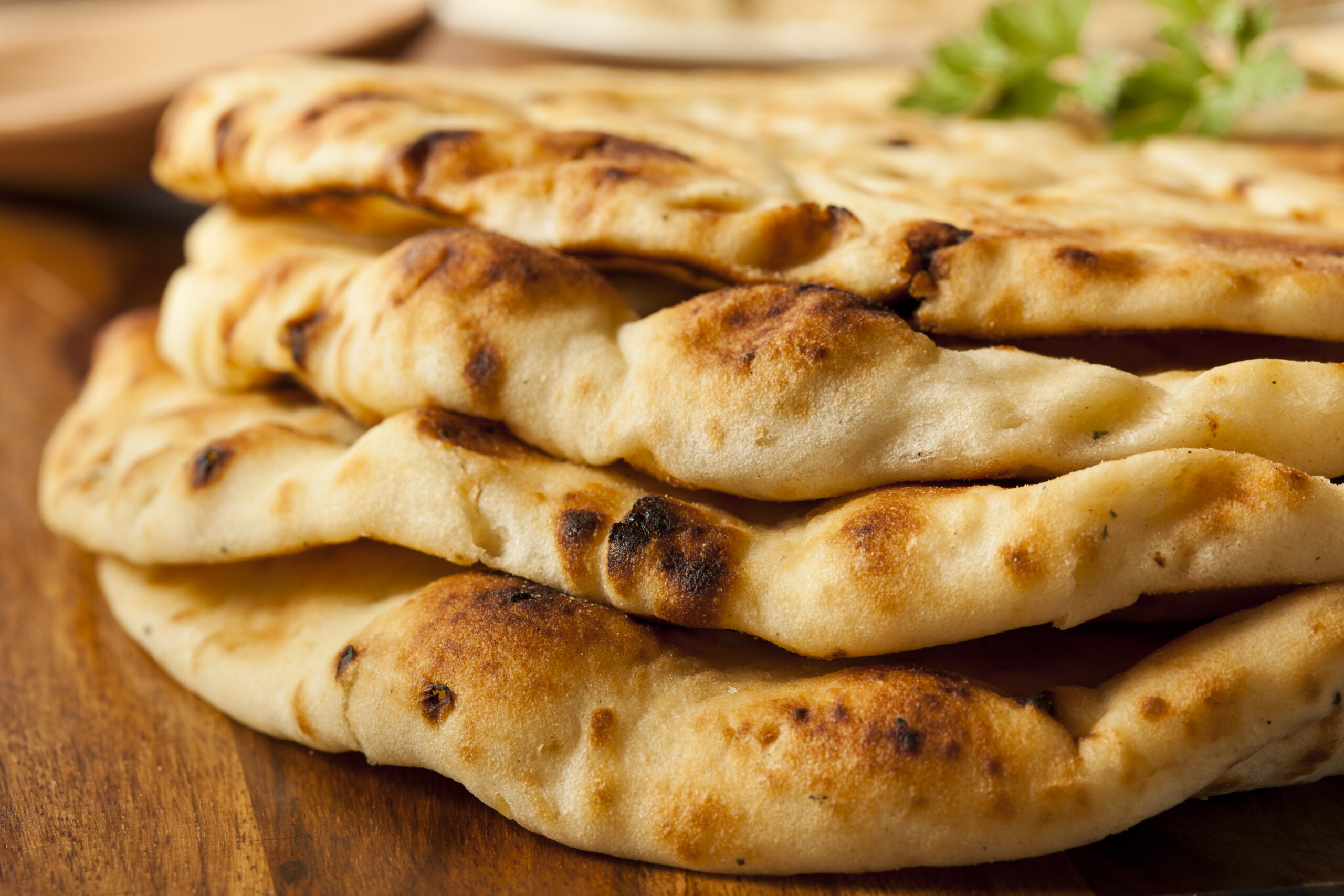
Naan’s charm isn’t just about its soft, pillowy texture, but also the way it perfectly complements any curry dish. It’s like the ultimate comfort food side.
This traditional Indian flatbread is beloved for its slight chewiness and beautiful, bubbly surface, typically kissed by a hot tandoor oven and brushed with ghee or butter.
Naan has a subtle flavor that complements many dishes. Its versatility is almost unmatched, but it’s just edged out by some other types of bread on our list.
Damper
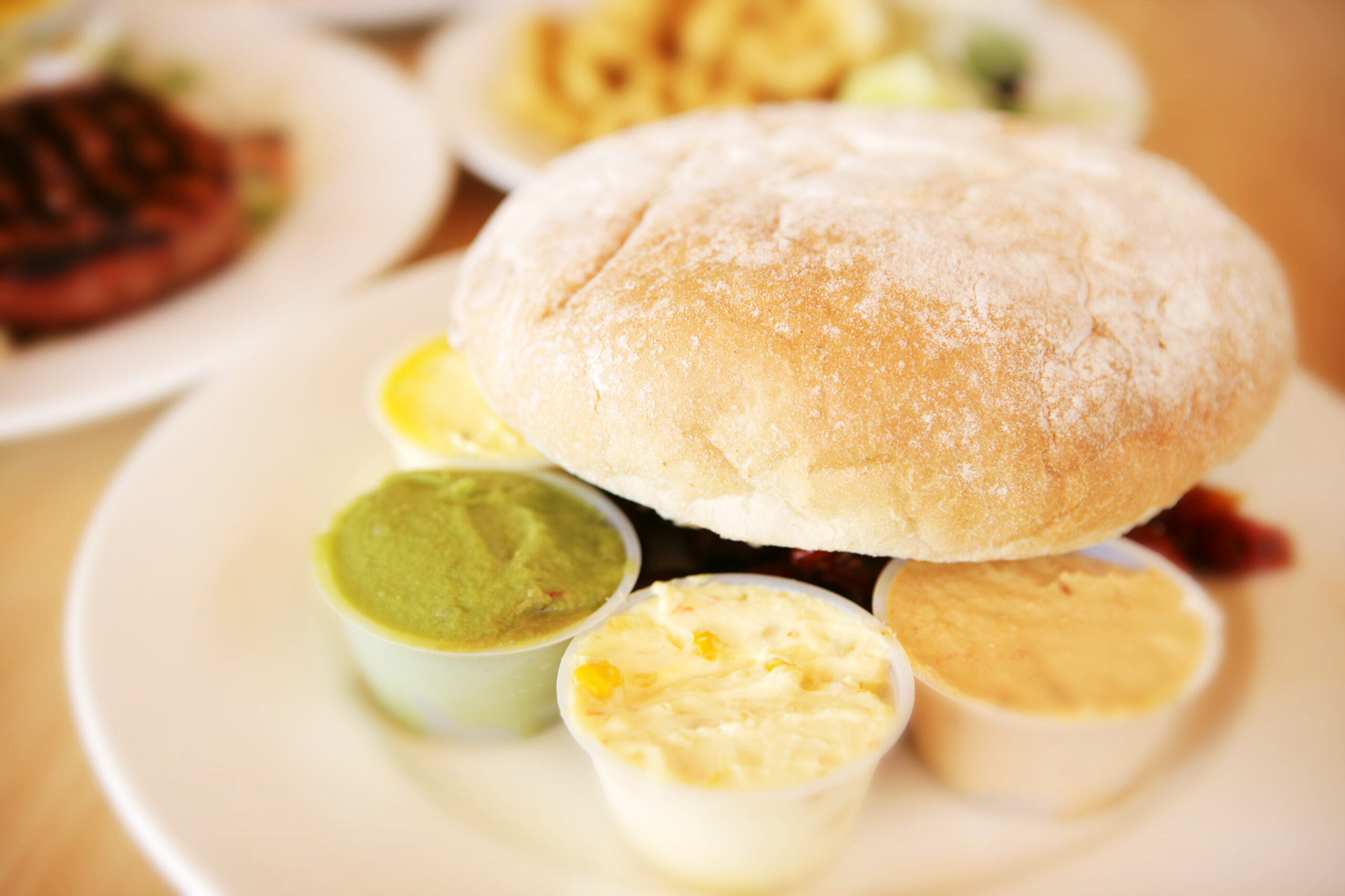
Damper is a traditional Australian bread, famously associated with bush cooking and historically prepared by travelers. It’s a simple bread made from basic ingredients.
It includes flour, water, and sometimes milk or butter, with baking powder used as the leavening agent instead of yeast. The dough is typically shaped into a flat round loaf.
It’s traditionally baked in the ashes of a campfire, giving it a distinctively rustic and smoky flavor. It’s best enjoyed fresh and warm, commonly served with butter or jam.
Pita
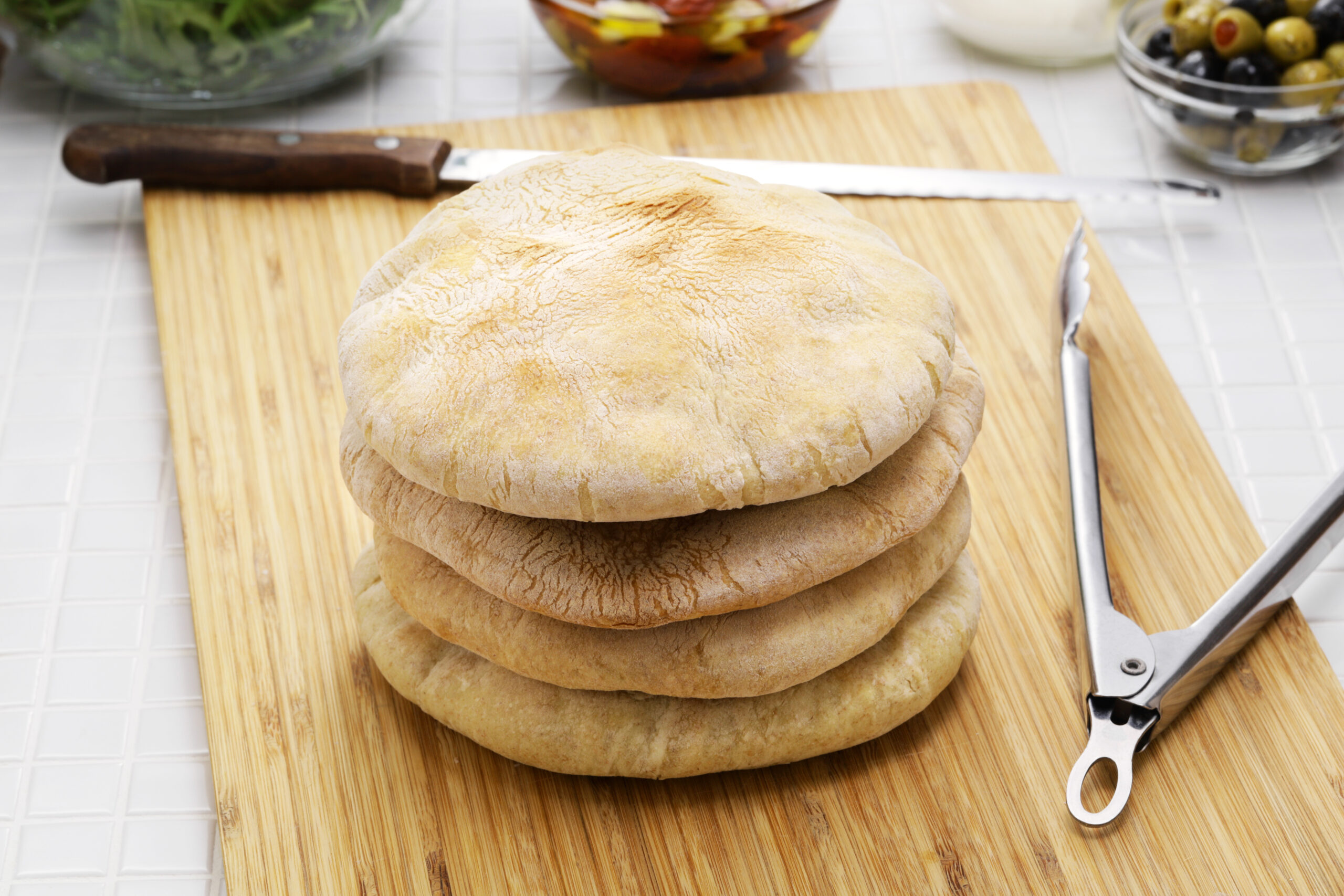
Pita bread, a staple in Middle Eastern cuisine, charms bread-lovers everywhere with its soft texture and pocketable design. It’s perfect for scooping dips or stuffing with fillings.
This versatile bread is lightly leavened, baking up with a satisfying puff that creates its signature pocket. has a mild, slightly earthy flavor that’s unobtrusive.
Served warm alongside a plate of hummus or packed with fresh veggies and grilled chicken for a hearty meal, pita is a deliciously practical option for any occasion.
Injera
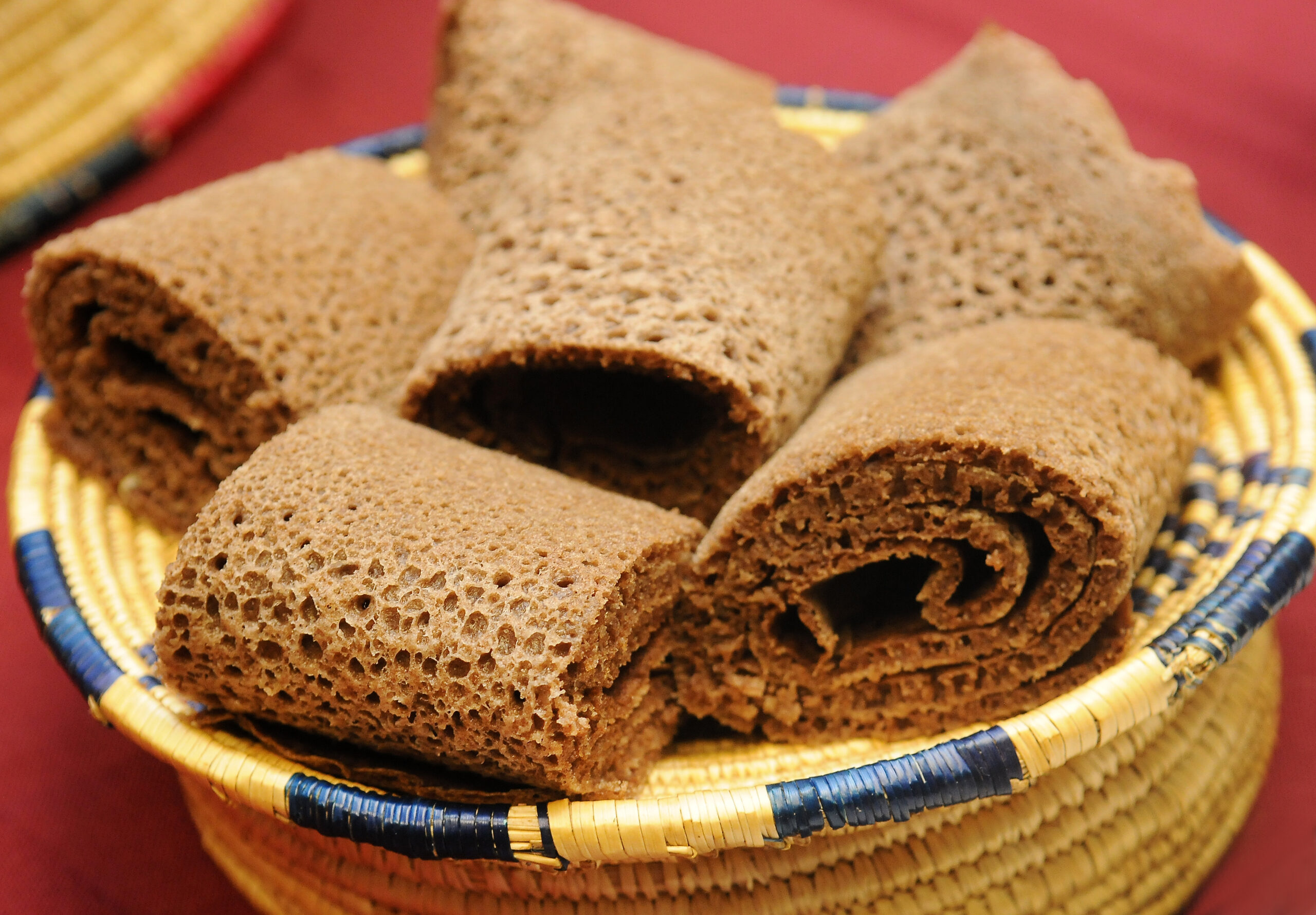
Injera is an integral part of Ethiopian and Eritrean cuisine, serving both as a dish and a utensil. It’s made primarily from teff flour, which is gluten-free.
Injera has a distinctive spongy texture and a slightly sour flavor that comes from a fermentation process similar to sourdough. This fermentation gives injera its unique bubbles.
Its soft texture makes it ideal for scooping up mouthfuls of spicy stews and salads. It’s often spread out on a platter and topped with different dishes.
Zucchini Bread

Zucchini bread sneaks into our list, masquerading as a sweet treat while packing in the goodness of veggies. It’s almost a cake, but not quite.
This moist, tender bread is often spiced with cinnamon and nutmeg, lending a warm, comforting flavor that pairs beautifully with a cup of coffee or tea.
Despite its healthful inclusion of vegetables, zucchini bread’s cake-like nature and sweetness can make it feel more like a dessert, so it’s not our top bread pick.
Stollen
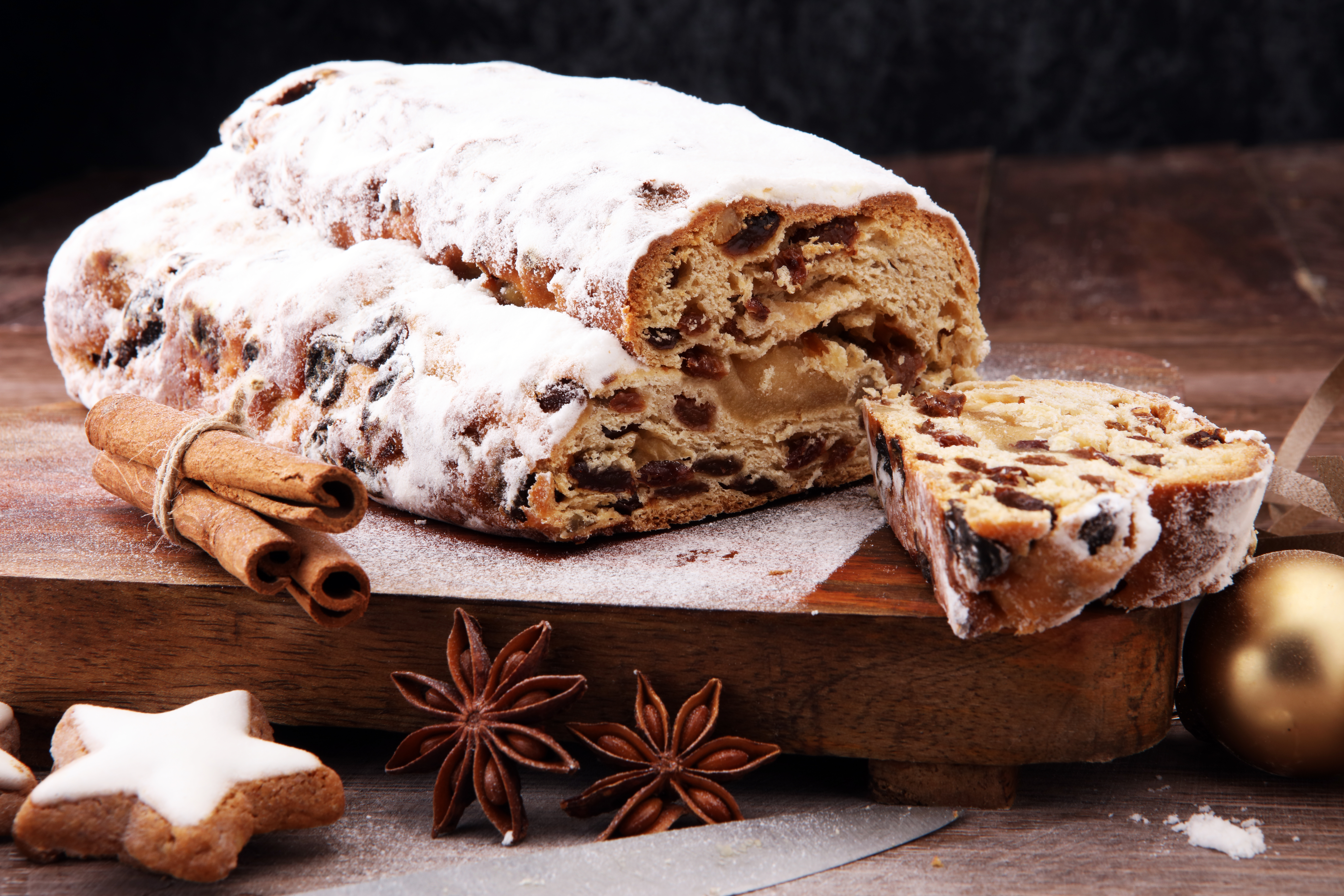
Stollen, a traditional German bread, richly dots our list with its festive flair and dense texture. This holiday treat is packed with dried fruits, nuts, and spices.
It often contains a vein of marzipan running through its center, adding a sweet almond flavor. It’s generously dusted with powdered sugar, resembling a snowy winter scene.
Stollen’s heavy, sweet composition and seasonal charm make it a beloved holiday staple. But these same characteristics confine it to special occasions rather than everyday fare.
Focaccia

Focaccia, with its enchanting olive oil gloss and herb-speckled crust, is perfect a canvas for culinary creativity. This Italian masterpiece transforms the simple act of bread-making.
This Italian flatbread is beautifully dimpled, often garnished with herbs like rosemary, and sprinkled with sea salt. Its crust, golden and crisp, contrasts the soft, pillowy interior.
Focaccia serves not only as a standalone snack but also as a versatile side. It’s perfect for sopping up sauces or as the base for artisan sandwiches.
Ciabatta
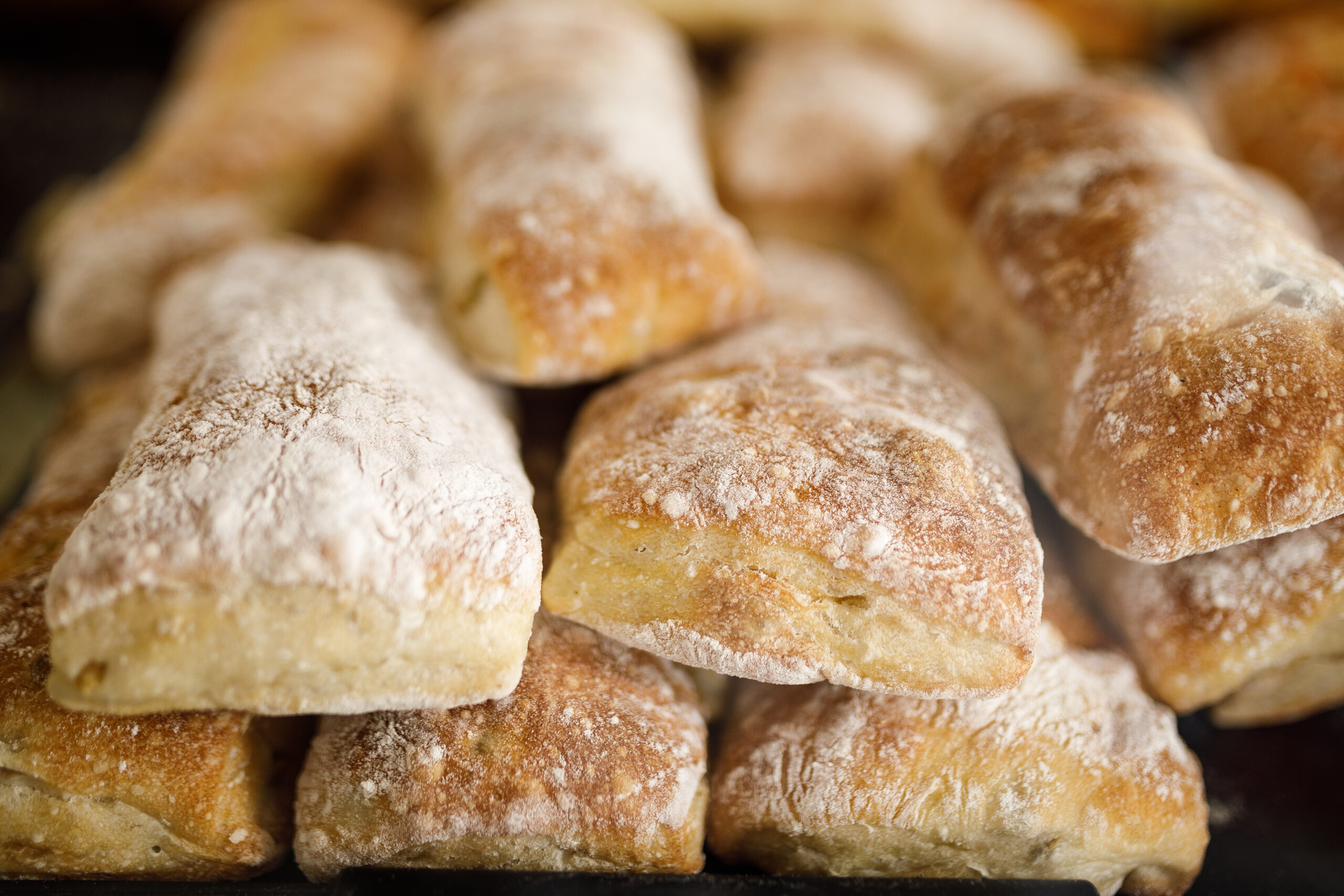
Dipping bread in olive oil or a hearty soup? Ciabatta’s your go-to! Its open crumb structure and chewy texture absorb flavors beautifully, enhancing your dipping experience.
Ever wondered why ciabatta bread, with its rustic charm and heavenly texture, is a staple in every sandwich lover’s diet? It’s all about that perfect chewy texture.
Ideal for soaking up flavors without falling apart, ciabatta transforms every bite into a delight. Not just any bread can elevate a simple sandwich to a culinary masterpiece.
Pumpkin Bread

Pumpkin bread, a fall favorite that’s deliciously welcome any time of the year, is an infusion of flavors that brings the warmth of spices into your kitchen.
Its moist, tender crumb is a testament to the magic of pumpkin puree. Plus, it’s a sneaky way to include vegetables in your diet.
From nuts and chocolate chips to a swirl of cream cheese, the additions are endless. You can customize each loaf to suit your cravings or impress guests.
Garlic Bread
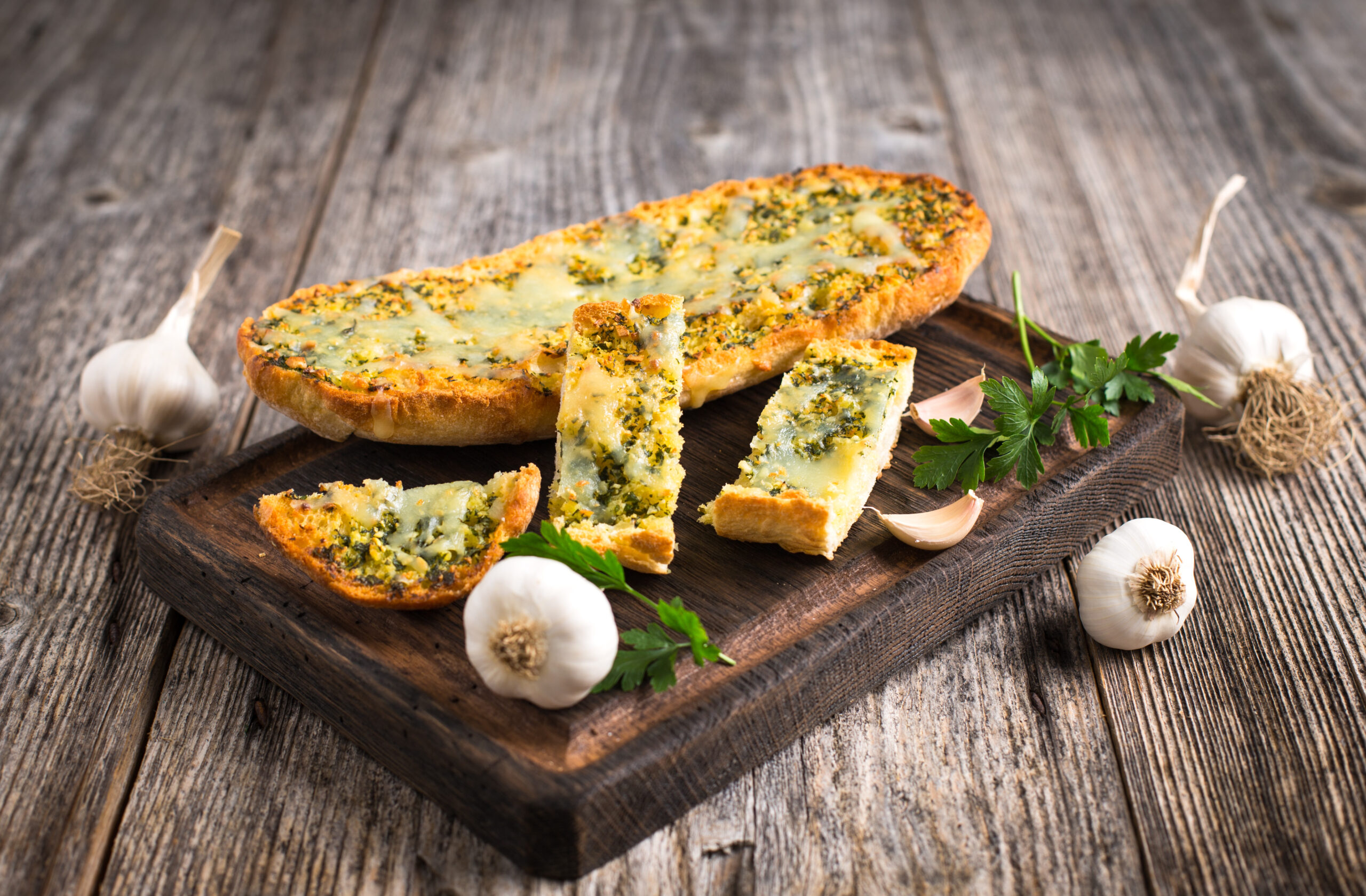
Garlic bread is a slice of heaven that complements any meal. Whether it’s spaghetti night or you’re just craving a snack, this ultimate comfort food never disappoints.
It’s all about the perfect blend of garlic, butter, and herbs, toasted to crispy perfection. This combination brings a cozy warmth to your meal.
Not all garlic bread is created equal. From the choice of bread to the type of butter and garlic used, each variation brings a unique twist.
Pretzel Bread

Who knew a twist of dough could bring so much joy? Pretzel bread, with its chewy texture and glossy, salt-speckled crust, is like a funfair in every bite.
It’s the perfect blend of salty and savory, making it a versatile player in the kitchen. Sandwich it, dip it, or just tear off a chunk.
Pretzel bread’s unique flavor comes from a dip into a baking soda bath before it hits the oven. This gives it that distinctive pretzel taste.
Croissant

Ever wonder why croissants have such a heavenly, layered texture? It’s all about the meticulous folding and rolling of dough and butter. This technique is called laminating.
Laminating creates those irresistible, melt-in-your-mouth layers that make croissants a bakery staple. And achieving the perfect croissant is no small feat; it requires patience and precision.
The key is maintaining the butter’s temperature: too warm, and it melts, too cold, and it breaks. This delicate balance ensures that buttery, flaky finish we all crave.
Bagel

Tthe humble bagel, a bake that bridges breakfast and lunch with ease. The secret to that perfect crusty exterior and chewy interior lies in the boil-and-bake method.
Ever wonder why bagels come with a hole in the middle? Beyond the iconic look, this design ensures an even cook. Plus, it’s the perfect nook for toppings.
Toppings and bagels go together like, well, bagels and cream cheese. Whether you’re Team Savory with lox and capers or Team Sweet with cinnamon-raisin, bagels are for everyone.
Banana Bread

Banana bread is a beloved classic that turns the misfortune of overripe bananas into a delicious opportunity. This moist, sweet loaf is easy to make and versatile.
It’s often enhanced with additions like walnuts, chocolate chips, or a sprinkle of cinnamon to elevate its flavor. The bread’s dense, cake-like texture makes it a favorite.
What sets banana bread apart is how it blends the rich flavor of ripe bananas with the inviting aromas of baking. It creates a homey, welcoming atmosphere.
French Baguette
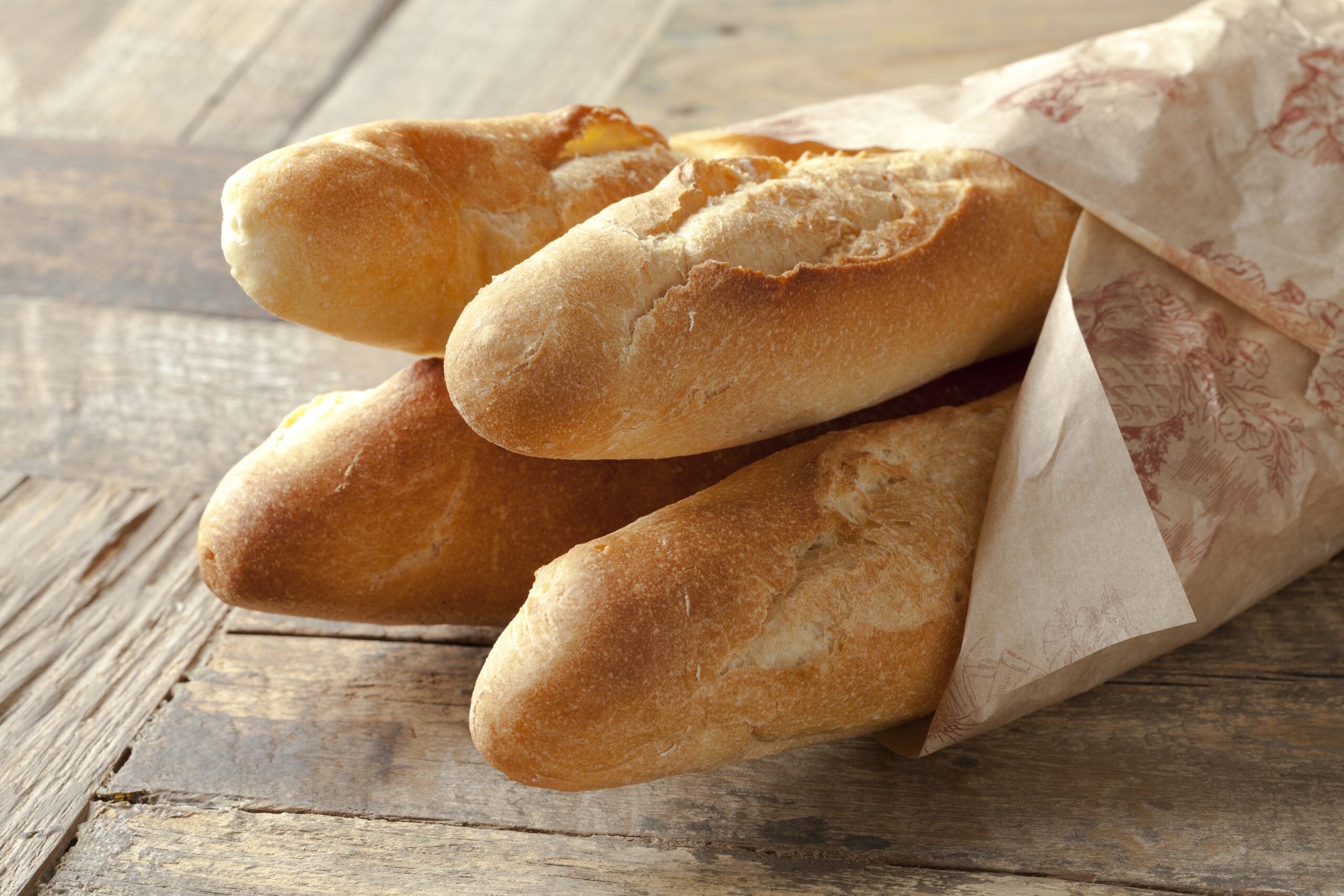
Ever wondered what makes a baguette’s crust so delightfully crunchy? It’s all in the steam. During baking, steam is introduced to create that iconic crisp shell.
At the same time, the inside stays wonderfully soft and airy. The baguette is also a symbol of French culture and culinary artistry.
Despite its undeniable charm and versatility, the baguette’s sometimes tough crust and short shelf life—best eaten the day of baking—prevent it from securing the top spot.
Milk Bread

Milk bread, a fluffy favorite, takes a high spot on our list thanks to its incredibly soft, pillowy texture and slightly sweet flavor. It originates from Japan.
This bread is made using a technique involving a roux-like paste called “tangzhong,” which helps retain moisture, making it unbelievably tender. Perfect for sandwiches or a simple snack.
Milk bread’s only drawback? It might be a bit too delicate or sweet for those who prefer a heartier, more rustic bread or something more versatile.
Brioche
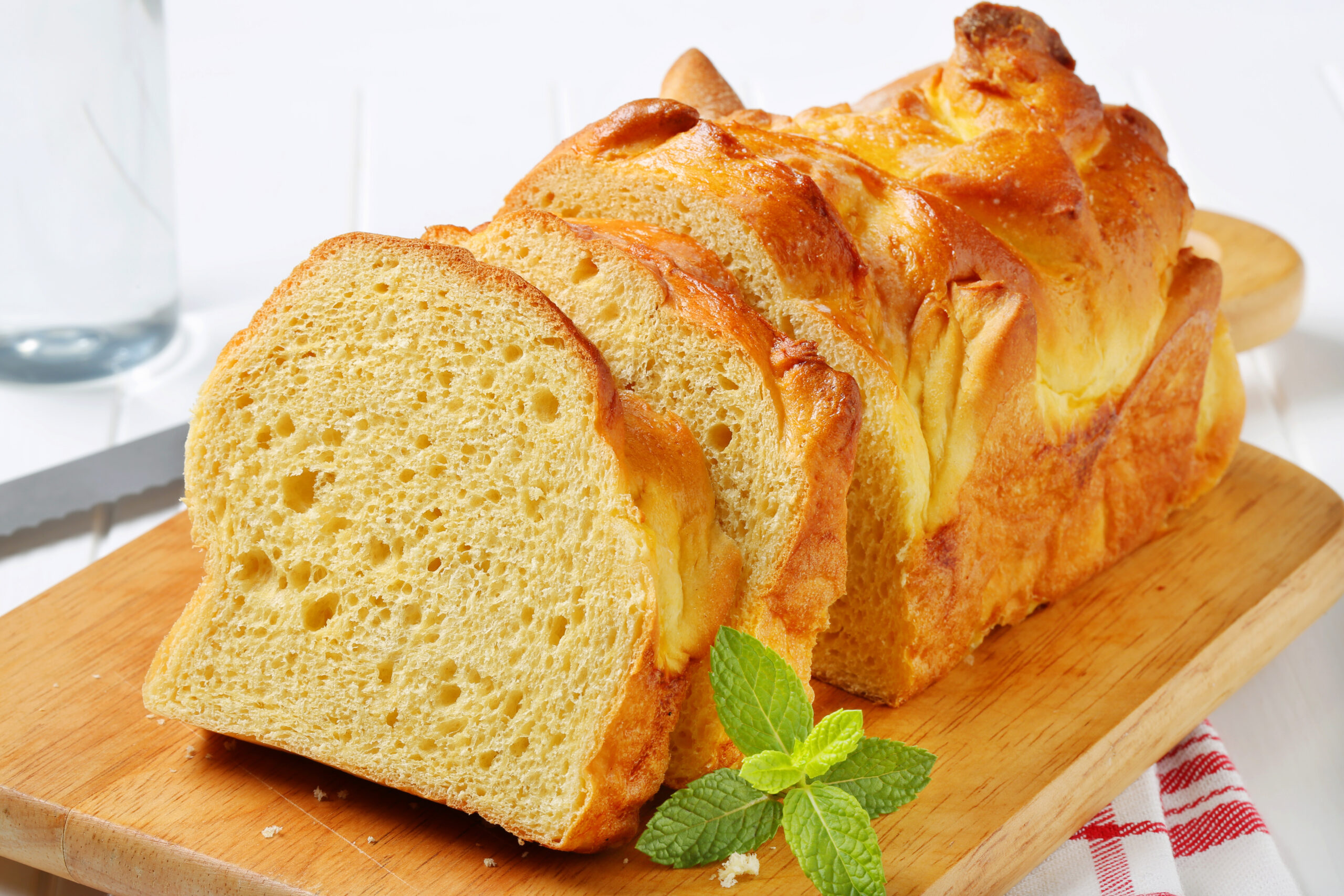
Brioche stands out amongst these types of bread for its high butter and egg content, giving it that unmistakable tender texture and rich flavor. It’s truly delicious.
Whether you’re layering it with gourmet jam or using it as the base for an indulgent sandwich, brioche elevates every experience that involves bread.
This French bread is almost pastry-like, rich with eggs and butter, but it shines in savory dishes, too. Pro tip: use brioche as a hamburger bun.
Challah

There’s something almost magical about the process of making challah. Simple ingredients like flour, eggs, water, yeast, and sugar result in a delicious braided masterpiece.
This traditional Jewish loaf is rich with eggs, giving it a tender crumb and a glossy, golden crust. Each braid and twist carries with it stories and history.
Challah is subtly sweet, often brushed with honey or sprinkled with sesame seeds. This makes it a versatile choice for both savory sandwiches and sweet French toast.
Frybread

Frybread claims the runner-up spot on our list. It’s celebrated not only for its taste but for its cultural significance, especially within Native American communities.
This bread is deep-fried until it achieves a golden, crispy exterior with a soft, chewy interior, offering a satisfying contrast. And it can go sweet or savory.
Despite its delicious versatility, frybread’s heavy, greasy nature keeps it from taking the top spot. It’s not the most health-conscious option for frequent indulgence!
Sourdough
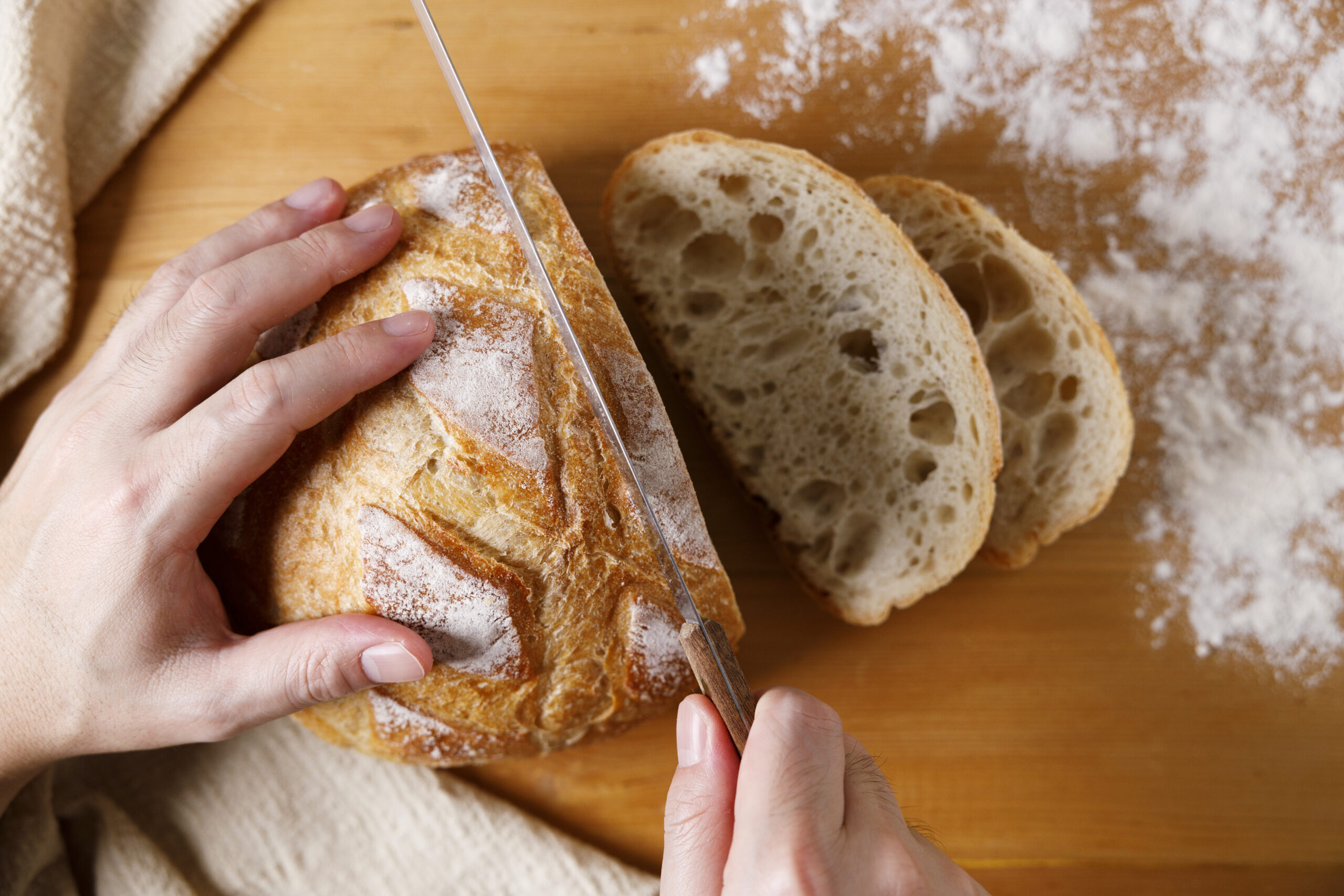
Sourdough claims the crown on our list, celebrated for its complex flavor, cultural significance, and artisanal charm. This bread stands out due to its natural fermentation process.
The process not only cultivates a tangy taste but also enhances digestibility and nutritional value. The crust is crisp and robust, encasing a chewy interior marked with airy holes.
Sourdough starter often becomes a cherished family heirloom, passed down through generations. This creates a deep, personal link to the bread for many homebakers.
Conclusion
And there you have it, folks! A comprehensive loaf-down of the 30 types of bread from worst to best for your home baking adventures. Whether you’re a fan of the simple yet satisfying white bread or the complex flavors of a well-fermented sourdough, there’s something in this list for every type of baker.